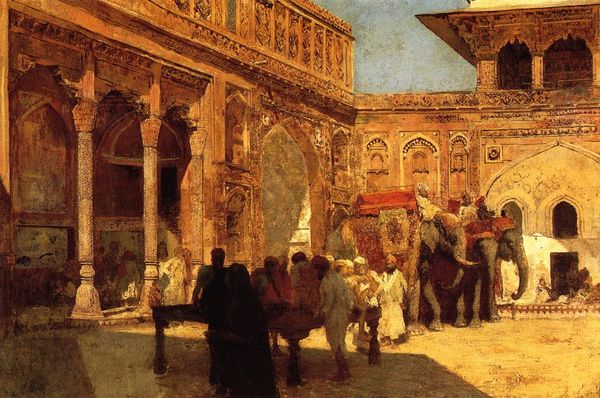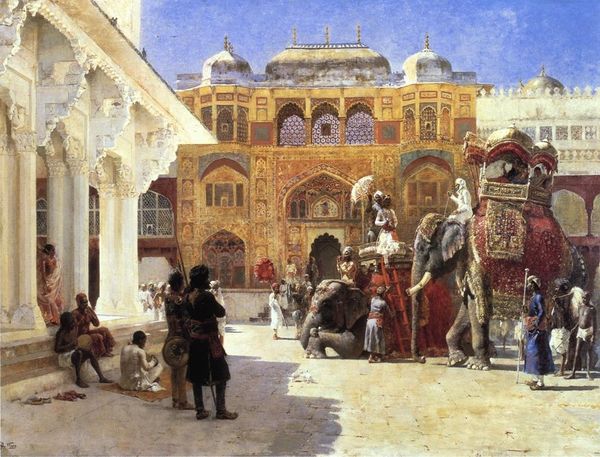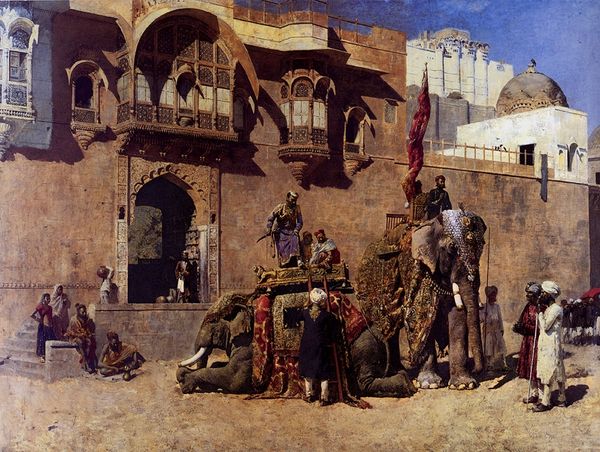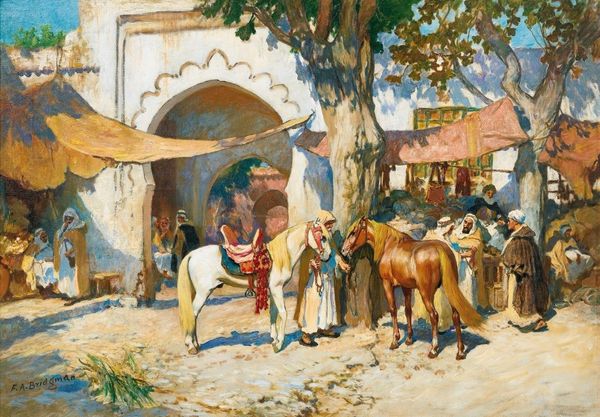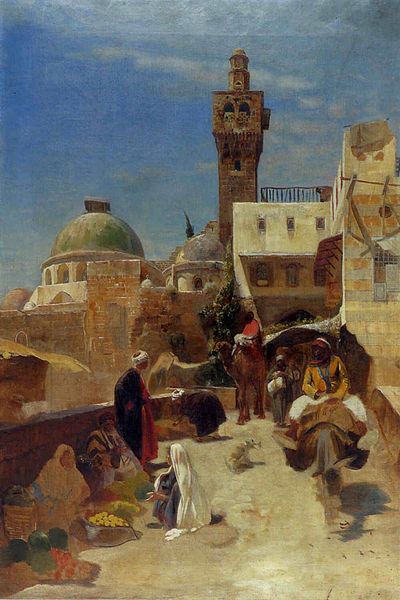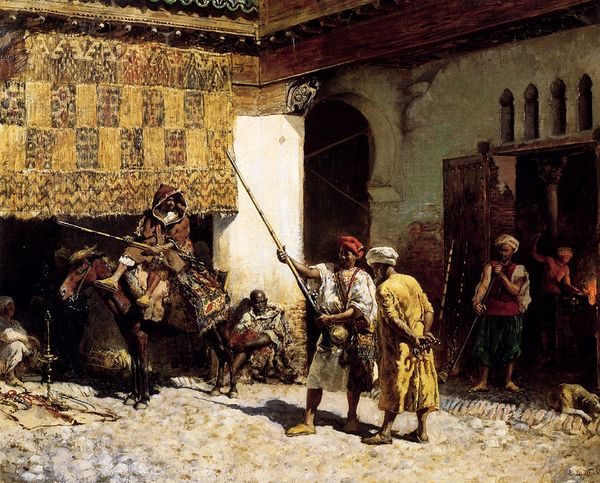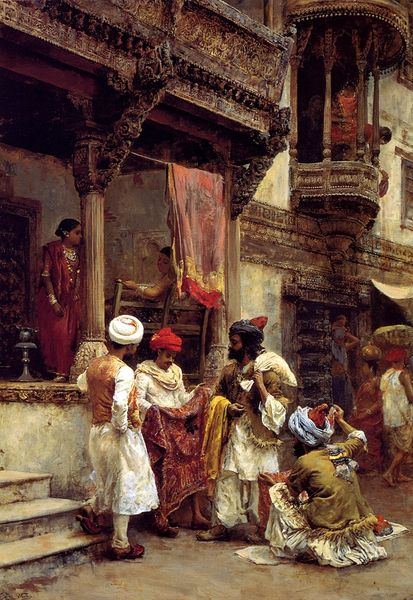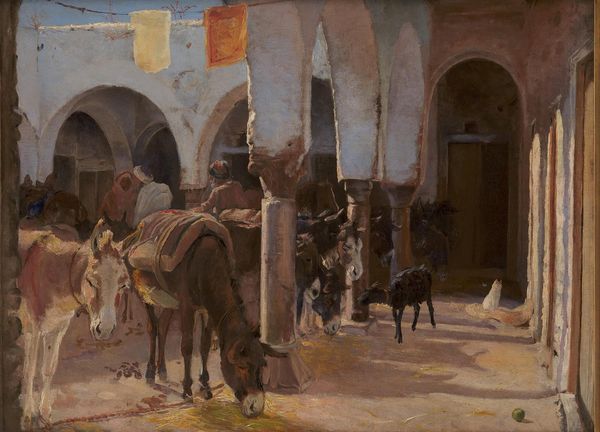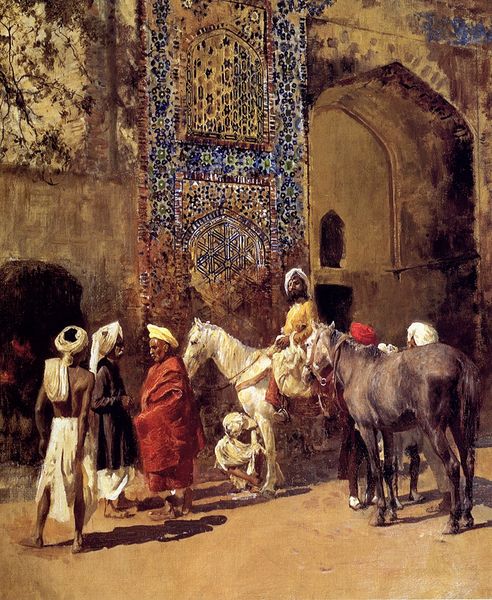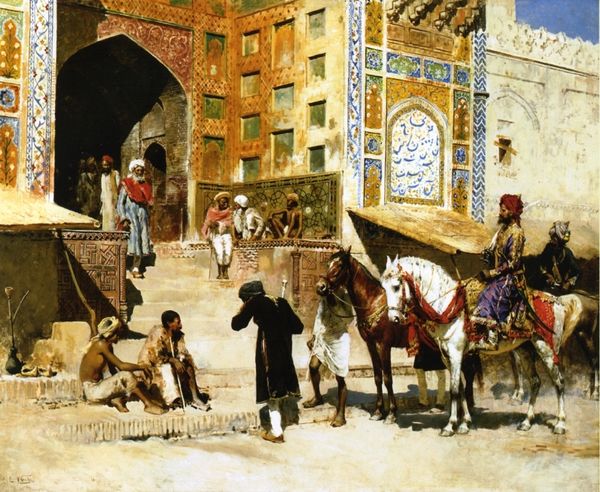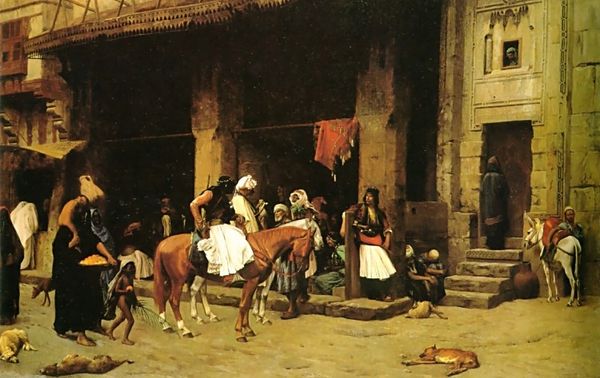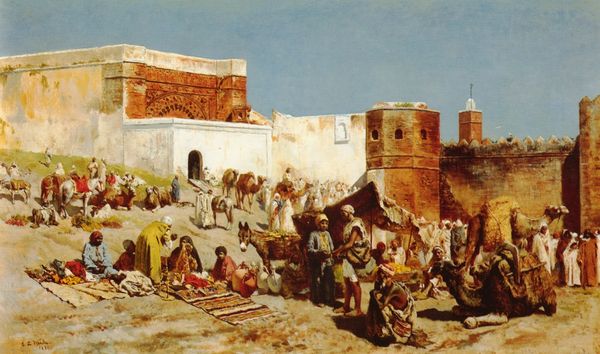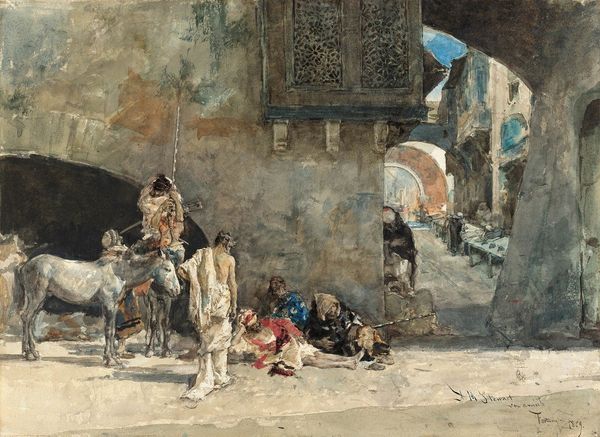
painting, watercolor
#
painting
#
landscape
#
watercolor
#
orientalism
#
genre-painting
Copyright: Public domain
Curator: Charles M. Russell, a well-known American artist typically associated with Western themes, created this 1908 watercolor painting entitled "Street Scene in Arabia." It's an interesting departure, don't you think? Editor: Absolutely. At first glance, the swirling figures and strong shadows evoke a sense of bustling movement frozen in a still moment. The whiteness of the dancer’s clothes contrasted with the darkness of the shadowed archway... it’s quite captivating. Curator: It's representative of a style known as Orientalism. The late 19th and early 20th centuries saw a rise in Western artists depicting scenes of the Middle East and North Africa, often through a lens that emphasized the exotic or picturesque. Editor: Right, and it's critical to acknowledge the power dynamics inherent in that "gaze". How much is genuine representation versus a projection of Western fantasies onto "the Orient?" Look at how the figures are grouped – observers and observed, clearly delineating social positions and suggesting narratives of gender, class, and culture. Curator: Exactly. Russell himself never actually visited Arabia. He drew inspiration from photographs and other visual sources circulating at the time, reinforcing those stereotypical narratives for his American audience. The composition is very staged. Editor: You can really see how these visual depictions cemented ideas about identity and otherness. Who is empowered, who is silent? This wasn’t neutral documentation; it actively shaped perception, then and now. Curator: True. Considering its provenance is critical. It appeared on the market in the late 20th century as a work from an anonymous private collection. It speaks to art market's role in shaping how such imagery is disseminated and the narratives they carry. Editor: Which underscores how crucial it is for museums today to deconstruct these historical power dynamics, to recontextualize artwork within its social and political realities and spark meaningful dialogue. Curator: Precisely. "Street Scene in Arabia" compels us to explore the relationship between representation, power, and cultural perception. It's an invitation to question, analyze, and challenge our understanding of historical and contemporary narratives. Editor: And hopefully, prompts a deeper, more equitable consideration of these often misrepresented spaces and the lives within them.
Comments
No comments
Be the first to comment and join the conversation on the ultimate creative platform.
